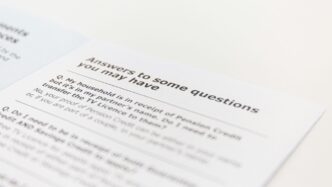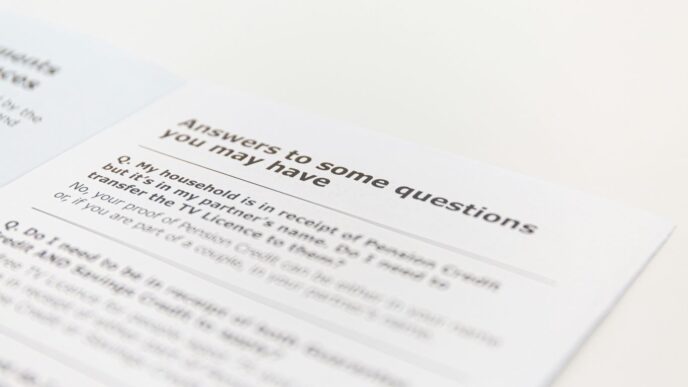Hiring can feel like a mess when every interviewer does things their own way. One person asks about teamwork, someone else dives deep into technical stuff, and at the end, the notes are all over the place. An interview guide template helps fix this by giving everyone a clear plan to follow. With a good template, you know what to ask, how to score answers, and where to write down your thoughts. This makes it easier to compare candidates and keeps the process fair for everyone. If you’re tired of juggling random spreadsheets and sticky notes, building a solid interview guide template is the way to go for 2025.
Key Takeaways
- An interview guide template keeps interviews organized and fair for every candidate.
- Defining job requirements and responsibilities upfront makes creating questions much easier.
- Using the same evaluation criteria helps your team compare candidates without bias.
- Digital templates save time and make feedback easier to track and share.
- Reviewing and updating your template regularly helps improve your hiring process over time.
Core Components of a Successful Interview Guide Template
When hiring needs get busy, things can fall through the cracks fast. It’s not unusual to end up with scattered notes, confused interviewers, and interviews that don’t match up from one candidate to the next. That’s why having a clear, well-structured interview guide template keeps everyone sane, organized, and fair.
Essential Elements for Consistency and Fairness
A solid interview guide isn’t just about having a few set questions. It’s a document that lays out every step so all candidates get the same shot and the same experience. This way, your team can compare apples to apples, not apples to oranges. Here are the essentials:
- Clear directions and what the goal is for each interview stage
- The type of interview (one-on-one, panel, group)
- The interview format: in-person, video, or hybrid
- Ground rules for how to treat and communicate with candidates (including scheduling and feedback)
- Required logistics (timing, location, supporting materials)
- Specifics about handling accessibility accommodations, if needed
Standardizing Evaluation Criteria
When everyone measures candidates on different things, it gets messy. Teams need concrete rubrics and ratings that demand consistency. Here’s a quick way to organize scoring:
| Category | Description | Rating Scale (1-5) |
|---|---|---|
| Technical Skills | Job-relevant know-how | 1 – Poor, 5 – Great |
| Communication | Clarity and professionalism | 1 – Poor, 5 – Great |
| Cultural Fit | Alignment with company values | 1 – Poor, 5 – Great |
This structure makes sure every interviewer uses the same blueprint, so decisions rely on facts—not gut feelings.
Documenting Roles and Interview Stages
The guide isn’t just for candidates—it’s a lifesaver for interviewers, too. Write it out so nobody is guessing what comes next. Here’s how you do it:
- Map each stage, from intro to closing
- Assign interviewer responsibilities (who covers technical skills, who checks soft skills, etc.)
- Time-box sections, so everything stays on schedule
- Set up space to jot down notes and feedback (digital works better for most people, especially with modern video training platforms)
Don’t forget: being detailed up front means fewer headaches later! With everyone playing by the same rules, you save time and make sure every hiring decision stands up to scrutiny.
Pre-Interview Planning for Streamlined Hiring
Getting ready for interviews isn’t just busywork—it can shape the entire outcome of your hiring. Even small things like unclear job descriptions or not agreeing on what you’re actually looking for can quickly make the process spin out of control. Making a solid plan before interviews begin helps keep things fair and focused, instead of just guessing your way through.
Conducting Job Analysis to Define Requirements
The first step: figure out what you really need from this hire. Sometimes, companies end up looking for a mix of unrealistic skills or miss the big picture. Here’s a straightforward way to tackle job analysis:
- Talk to team members and managers about daily tasks for the role.
- List out must-have skills versus nice-to-have ones. Don’t fudge it—be honest.
- Review past high-performers in the same role (if any) and spot what made them successful.
For some extra context, using platforms such as Upwork for hiring video tutorial experts is on the rise, showing how new types of roles may need clear, accurate analysis up front.
Outlining Role Responsibilities and Key Competencies
Once you know what the job’s really about, break down the responsibilities so interviewers aren’t left guessing. Here’s a quick table to keep everything clear:
| Responsibility | Examples | Competencies Needed |
|---|---|---|
| Manage video projects | Tutorials for customers | Project management |
| Edit digital media | Animation, screencast editing | Technical skills |
| Communicate with freelancers | Weekly check-ins, feedback | Communication |
This makes it easier to match questions and scorecards to what actually matters.
Aligning Interview Guide Templates with Organizational Goals
It’s not just about the job—every interview guide should fit into the larger company picture. Here’s why alignment matters:
- Keeps the focus on growth priorities (e.g. building a remote-first team)
- Makes sure all hires understand your mission, not just their job
- Helps HR and hiring managers measure impact beyond resume bullet-points
Before locking in your interview guide, review organization policies and any new directions from leadership. Nothing derails hiring faster than interviewing as if it’s still 2020.
In the end, careful planning brings structure and focus—so you’re not just hoping you’ll "know the right candidate when you see them."
Structuring Interview Flow Using Guide Templates
Getting the interview process organized isn’t just about writing good questions. It’s about making sure every candidate goes through a clear and repeatable process. Using a guide template lets your hiring team stick to a schedule and avoid chaos. A good flow helps prevent any one candidate from getting a totally different experience than the others. Here’s how to pull that off using templates.
Mapping the Interview Sequence
Start by building out the timeline for your interview. Decide what happens, and when. If you skip this step, interviews tend to get messy, or overlap for no reason.
Here’s a simple sequence to use:
- Friendly introductions and a quick rundown of the company.
- Background questions to understand the candidate’s past jobs.
- Targeted questions focused on the role.
- Open time for the candidate to ask their questions.
- Wrapping up and outlining next steps.
And yes, you should spell this out in your template. That keeps everyone, on both sides of the table, on the same page.
| Stage | Purpose | Lead Interviewer |
|---|---|---|
| Introductions | Break the ice, make candidate comfy | HR / Team Lead |
| Resume Review | Probe job history and experience | Hiring Manager |
| Role-Specific Qs | See technical or practical skills | Team Lead / Peer |
| Candidate Questions | Candidate interviews you back | Any |
| Wrap Up | Explain next steps | HR / Coordinator |
Assigning Interviewer Responsibilities
You don’t want everyone crowding around with random questions. Assign roles up front so folks know what they’re supposed to cover.
- Pick who kicks off the interview, maybe someone good at making people feel welcome.
- Choose the team member who’ll cover technical questions (usually the hiring manager or a senior peer).
- Designate a note taker who logs details and first impressions as things happen.
- The closer/wrap-up person should clarify the next steps, so no one leaves with questions about what’s next.
This structure cuts out overlap, and makes it easier to gather usable feedback.
Ensuring Consistent Candidate Experience
Consistency matters—a lot. Not just for fairness, but because it lets you compare people side by side. If one candidate gets a soft, friendly chat and another gets grilled by five people at once, you can’t really weigh them evenly.
Here’s how to use your template for that:
- Every candidate faces the same key questions, in the same order.
- Collect feedback using the same scoring sheet—no more sticky notes or half-remembered impressions.
- Give everyone equal time for responses and follow-up questions.
When you line up candidates head to head, you’ll feel way more confident about your final pick. And as a bonus, it makes your process look professional. Candidates respect that (and will probably mention it whether they get the job or not).
Developing Effective Interview Questions and Scoring Rubrics
Building strong interview questions and designing a solid scoring system is one of those things that sounds simple, but actually takes a bit more thought. If you just wing it, interviewers end up relying on gut instinct or notes scribbled in the margins—never a way to hire the right person. Here’s how to put together questions and rubrics that make sense and actually work in 2025.
Crafting Role-Specific and Behavioral Questions
Interviews run smoother and are fairer when every candidate gets a shot at the same kinds of questions. Here’s what many teams do:
- Create a list of both role-focused and general behavioral questions, tailored to the actual job description.
- Link each question to a key skill or competency—things like communication, time management, or technical ability.
- Make sure follow-ups are pre-planned, so interviewers don’t go off script or touch on risky topics by accident.
A well-composed mix often includes:
- "Tell me about a time you overcame a challenge at work." (Behavioral)
- "Walk me through your process for troubleshooting [specific software/tool]." (Technical)
- "How would you prioritize conflicting projects with tight deadlines?" (Situational)
Tagging Question Types for Consistent Assessment
One trick is to tag each question by skill or category. You might mark questions for technical skill, culture fit, or problem-solving. This method lets you see if you’re truly covering the areas needed—without repetition or gaps.
Simple steps for tagging:
- Assign each question a primary competency.
- Color-code or label your interview template accordingly.
- Keep a balance across all core areas.
Sample Table:
| Question | Skill/Competency | Type |
|---|---|---|
| Tell us about a tough customer interaction. | Communication | Behavioral |
| How do you troubleshoot network issues? | Technical Knowledge | Technical |
| Describe a time you led a successful project. | Leadership | Behavioral |
| What motivates you at work? | Cultural Fit | General |
Building a Transparent Evaluation System
Once questions are set, you need a clear—and fair—way to score. Interview rubrics improve consistency and reduce bias, which is super important for a smooth process.
Here’s how to sketch out a solid system:
- Set a straightforward scale (like 1–5), with a description for each rating (e.g., 1 = poor, 3 = meets expectations, 5 = outstanding).
- Provide concrete examples of "great" versus "average" or "weak" answers for each question.
- If some skills matter more, weight those questions higher in your scoring. Example—tech skills might count more for a developer, teamwork for a project manager.
Sample Scoring Table:
| Competency | Weight | Candidate Score (1-5) | Weighted Score |
|---|---|---|---|
| Technical Ability | 40% | 4 | 1.6 |
| Problem Solving | 30% | 3 | 0.9 |
| Communication | 20% | 5 | 1.0 |
| Leadership | 10% | 2 | 0.2 |
| Total | 100% | 3.7 |
For more robust guides, include a quick legend for the scoring and write out what counts as an "ideal answer" for each core question. This sets a reliable standard for every interviewer—and makes it a lot easier to compare scores after.
By consistently refreshing your questions and rubrics to stay aligned with changing job needs, you keep your hiring process relevant and fair every time.
Implementing Legal and Ethical Standards in Interview Guide Templates
Setting up interview guides with clear legal and ethical rules isn’t just a checkbox—it’s one way companies avoid trouble and treat people right. If you want your hiring process to work well in 2025, you’ve got to make sure every template leaves zero doubt about fairness, accessibility, and basic ethics.
Incorporating Equal Opportunity Practices
Every interview needs to start on an even playing field. To stop bias sneaking its way into the process, interview guides should include:
- A firm statement about equal opportunity in hiring, referencing your company’s anti-discrimination policy.
- Reminders not to ask questions about things like age, race, religion, family status, or other protected categories.
- Guidance on how to stick to job-related questions only, with examples of what’s okay (and not okay) to ask.
Without these reminders in writing, interviewers sometimes slip into gray areas—so put it directly in every guide.
Addressing Accessibility and Accommodations
There’s no point calling a process “fair” if it shuts some people out. Make sure every guide template:
- Lists how candidates can ask for accommodations, with a specific contact or process.
- Reminds interviewers to proactively ask if anybody needs adjustments, especially for virtual or in-person interviews.
- Has a quick-reference checklist of common accommodations (extra time, alternate formats, accessible technologies) and how to arrange them.
Here’s a simple table of sample accommodations:
| Need | Possible Accommodation |
|---|---|
| Hearing difficulty | ASL interpreter, captions |
| Mobility challenge | Step-free building, elevator |
| Vision impairment | Large-print materials, screen reader access |
| Anxiety/distraction | Extra time, breaks, quiet room |
Providing Clear Ethical Guidelines
Let’s face it: temptation and awkward situations happen. By spelling out what’s ethical, you stop mistakes before they start. A good interview guide template can include:
- A code of conduct for interviewers—like no personal relationships, no accepting gifts, and always treating candidate info as private.
- Specific examples of what to do if you discover a potential conflict of interest.
- Steps for reporting concerns or mistakes if an interview goes off track (anonymous channels, escalation points, etc).
- A checklist to remind interviewers to document every step they take with candidates.
With legal and ethical standards baked into every interview guide, you’re not just following laws—you’re building trust with everyone who walks through the (literal or virtual) door. In the end, that’s what makes hiring work.
Leveraging Technology to Enhance Interview Guide Templates

Interview guide templates, once stuck as static documents, are now smarter than ever, thanks to technology. Managers and hiring teams have new tools that don’t just save time; they also help everyone stick to the same process without a pile of paperwork or missed emails. Let’s look closer at how tech can make your interview guide template easier to manage and way more effective.
Adopting Digital Interview Guide Platforms
Switching from PDF formats or paper notes to digital interview guides is a game-changer. Modern interview platforms keep all guide materials, questions, and feedback in one place, streamlining the process for everyone. Here’s why people like them:
- Guides are accessible from anywhere, so remote and in-person interviewers are on the same page.
- Templates can be easily updated; no one’s hunting for the latest version.
- Security is better—no more confidential info floating around on people’s desks.
Table: Features Comparison
| Feature | Manual Guides | Digital Platforms |
|---|---|---|
| Remote Access | No | Yes |
| Real-Time Updates | No | Yes |
| Automated Scoring | No | Yes |
| Centralized Feedback Storage | No | Yes |
| Integration with Scheduling | No | Yes |
Streamlining Feedback and Data Collection
Handling feedback by email is messy and error-prone. Interview software fixes this by collecting data as interviewers complete their parts. Here’s how this helps:
- Less manual work. Instead of consolidating forms or tracking email threads, results go straight into candidate records.
- Teams can spot patterns like interviewer biases or inconsistencies.
- Data from each round is viewable by everyone involved, making hiring decisions faster and more transparent.
Often, platforms have dashboards that show:
- Time-to-hire stats
- Scoring trends across candidates
- Interviewer participation and completion rates
Iterating Templates Based on Analytics
Your first version of an interview guide won’t be perfect, and that’s fine. Tech tools make it easy to adjust over time, relying on actual data, not just gut feelings. Here’s how organizations approach this:
- They track how long each interview takes and where bottlenecks occur.
- Platforms might flag discrepancies between evaluators—maybe some score much higher or lower than others.
- Teams revisit and tweak questions that don’t help differentiate candidates or lead to too much subjectivity.
In short, a good digital system doesn’t just organize your process, it helps you keep improving it, one interview at a time.
By using tech to manage interview guide templates, hiring teams waste less time, make better decisions, and always know exactly where things stand.
Measuring Impact and Continuous Improvement

Building a useful interview guide template isn’t a one-and-done deal. You’ll want to understand how well it works—does it help choose strong new hires, or does it just add paperwork? Here’s a breakdown on what to track and how to keep things fresh and effective year after year.
Tracking Hiring Metrics and Candidate Outcomes
You’ve got to know what’s working—and what’s not—so collect data at every step of the hiring process. Here’s a sample of metrics that can give you real insight:
| Metric | Before Template | After Template | Change |
|---|---|---|---|
| Time-to-Hire (days) | 25 | 14 | -44% |
| Candidate Experience | 7.0/10 | 9.0/10 | +29% |
| New Hire Quality | 7.5/10 | 8.5/10 | +13% |
| Admin. Time per Hire | 4 hrs | 1 hr | -75% |
Keep an eye on:
- Average days to fill a position
- Early turnover rates (first 6-12 months)
- Interview-to-offer ratios
That way, you’ll spot problems before they get big, and celebrate the improvements that matter most.
Collecting and Integrating Interviewer Feedback
Once interviews are done, don’t forget to ask interviewers how the guide worked out:
- Email quick surveys to interviewers after each round
- Hold monthly group chats to review tricky parts of the process
- Let people suggest changes directly in the digital guide—easy, quick wins
Open-ended feedback is gold. Maybe interviewers find some questions confusing or think a scoring rubric is weird—taking these notes seriously and folding suggestions back in makes the whole system smoother. Even ideas from folks new to interviewing should get airtime.
Updating Templates for Changing Hiring Needs
The job market never stays still, and your guide shouldn’t either. Review your template on a normal schedule (at least every six months) and whenever you:
- Add a new type of position
- Sense a shift in business goals
- Get repeated candidate or interviewer complaints
Don’t just rely on gut feelings. Base updates on recent numbers, feedback, and hiring outcomes. Sometimes you’ll want to spin up a fresh brainstorm—borrow strategies from maintaining a consistent and engaging message to keep your guide template relevant and effective.
Making these updates isn’t about chasing trends; it’s about keeping hiring sharp, clear, and fair for everyone. And really, the time you put in now pays off with better hires and a smoother process down the line.
Conclusion
Wrapping things up, building an interview guide template might seem like a lot of work at first, but it really pays off. When everyone on your team is using the same playbook, interviews run smoother and it’s way easier to compare candidates. You don’t have to worry about missing important questions or forgetting to jot down your thoughts. Plus, candidates notice when the process is organized—they feel respected and know what to expect. If you keep your guide up to date and tweak it as you go, you’ll keep making better hires and save yourself a lot of headaches. In the end, a solid interview guide isn’t just a document—it’s a tool that helps everyone make smarter decisions, faster.
Frequently Asked Questions
What is an interview guide template and why is it important?
An interview guide template is a document that helps interviewers ask the same types of questions and use the same standards when talking to job candidates. This makes the hiring process more fair and organized because everyone is judged by the same rules. It also helps interviewers remember what to ask and how to score answers.
How does an interview guide template help reduce bias in hiring?
When every interviewer uses the same questions and scoring system, it’s harder for personal opinions or gut feelings to affect the results. This means candidates are judged more by their skills and answers, not by things like first impressions or small talk.
What should be included in an effective interview guide template?
A good interview guide template should list the main job duties, the skills needed, and the steps of the interview. It should have a set of questions to ask, a way to score answers, and clear rules for interviewers. It’s also helpful to include notes about legal and ethical guidelines.
How can technology make interview guides better?
Using digital tools or software for interview guides helps interviewers keep everything in one place. It makes it easier to share questions, score answers, and collect feedback. Technology can also help track which parts of the process work best so you can keep improving.
How do I know if my interview guide template is working well?
You can check if your template is working by looking at things like how quickly you fill jobs, how happy new hires are, and if interviewers find the process easy to use. Asking for feedback from both interviewers and candidates can help you find ways to make it better.
Do interview guide templates need to be updated over time?
Yes, interview guide templates should be reviewed and updated regularly. As job roles or company goals change, the guide should change too. This helps make sure you’re always hiring the best people for the job and keeping up with new laws or best practices.














